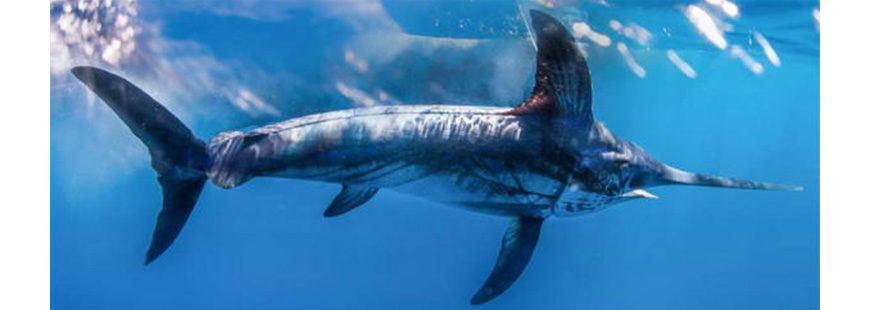New legislation will improve marine resource conservation and promote innovative new fishing gear
This post first appeared in Fishing Wire and is reprinted with permission
Last Tuesday, Senators Feinstein (D-Calif.), Capito (R-W.Va.) and Harris (D-Calif.) introduced S.2773 the Driftnet Modernization and Bycatch Reduction Act to phase out the use of mile-long drift gillnets in the eastern Pacific by 2020 and bring California swordfish fishing in-line with all other U.S. and international swordfish fisheries. The Senators waited patiently while NOAA Fisheries rejected the Pacific Fishery Management Council’s recommendation to cap driftnet bycatch and California’s efforts to negotiate a driftnet permit buyout stalled. Now, this bill changes the tide from indiscriminate industrial gears toward fisheries that support small scale, high yield, low bycatch fisheries, the future of fishing in America.
Drift nets are an anachronistic fishing gear that’s on its way out everywhere. The drift net fishery sets invisible nets, fifty yards deep and up to a mile long that ensnare valuable swordfish, but also sea turtles and a whole lot more. The California drift gillnet fishery discards over fifty percent of its catch, and by allowing drift netting to continue off the west coast, we are on the wrong side of history. The United Nations banned large-scale drift nets on the high seas twenty years ago. The U.S. has banned drift nets of any size in our east coast fisheries, including for swordfish, the Western Pacific Fishery Management Council prohibits their use in a 1.5 million square mile area surrounding the Hawaiian archipelago and the U.S. supported a moratorium at the International Commission for the Conservation of Atlantic Tunas. The European Union disallowed drift netting among its 27 member states in 2002.
Recent efforts by the Pacific Fishery Management Council to limit bycatch have failed. In 2016, the Pacific Fishery Management Council voted to limit the number of turtle, whale and marine mammal interactions. Last year, National Marine Fisheries Service declined to promulgate the necessary implementing regulations. But in the end, even if the Council could manage the fishery to avoid interaction with and mortality of marine mammals and sea turtles – a highly doubtful proposition – it would not decrease the bycatch of fish – thousands of non-target sharks, hundreds of billfish and many other species – which account for more than fifty percent of the entire catch in drift nets. Simply put, the continued use of indiscriminate drift nets is at odds with federal requirements to minimize bycatch and with promoting healthy open ocean ecosystems and recreational fishing opportunities.
It is reveling of the indiscriminate nature of the gear, which tangles all manner of marine life in its path, that the most effective regulations for eliminating bycatch are time-are closures; that is, taking the gear out of the water where and when it is doing the most harm. For example, NOAA fisheries designated an area off Oregon and Northern California a Pacific Leatherback Conservation Area, where drift netting is prohibited from late summer through the fall to protect critically endangered leatherback turtles that migrate to the coast seasonally to feed on jellyfish. Since its inception, in 2001, the observed interactions with leatherback turtles have declined. The seasonal closures, however, merely underscore the fact that there is no regulatory fix for drift net bycatch, aside from strictly limiting or prohibiting the gear.
It’s time for Congressional action to remove drift net gear from California waters and to replace them with innovative gear. For a number of years now, Wild Oceans has been working with the International Game Fish Association, Coastal Conservation Association of California and American Sportfishing Association to promote a transition away from drift nets – to safer, more selective fishing methods for swordfish, tuna and other commercial species. One such emerging method is buoy-gear, used by swordfish fishermen in Florida for over a decade, supplying a high-value product with virtually no bycatch. It’s been so popular with commercial fishermen that a pilot buoy-gear study is underway in the Gulf of Mexico, where longline bycatch of breeding bluefin is a threat to that severely overfished tuna’s recovery. The U.S. has even exported the technology. Under the a Memorandum of Understanding signed by the U.S. and Morocco to end widespread drift netting for swordfish in the Mediterranean Sea in 2012, we are helping that nation’s fishermen move from drift nets to buoy-gear. According to the U.S. statement announcing the agreement: “If effective in Moroccan fisheries, this gear type potentially offers a small-scale, high-yield, locally supplied solution as an alternative to drift nets. By sharing this technology, we can support Morocco’s efforts to eradicate drift nets, an action that has many benefits for the marine environment.” The legislation will not only eliminate use of indiscriminate gear, but support the switch to innovative gear, like deep-set buoy gear.
For more than thirty years, the Pacific Council and the State of California have struggled to constrict and constrain the drift gillnet fishery into compliance with our best management practices for open water fisheries, such as low bycatch of non-target species, live release of incidentally-caught or undersize fish, and cost-effective monitoring and enforcement. Still drift gillnets produce excessive bycatch and waste, resulting in half of the catch being discarded as unwanted, prohibited or protected species. This legislation aligns the California swordfish fishery with Wild Oceans goals for bluewater fisheries, such as locally-supplied seafood, recreation and tourism, community-based employment and, in support of it all, maintaining abundant and sustainable fishery.


